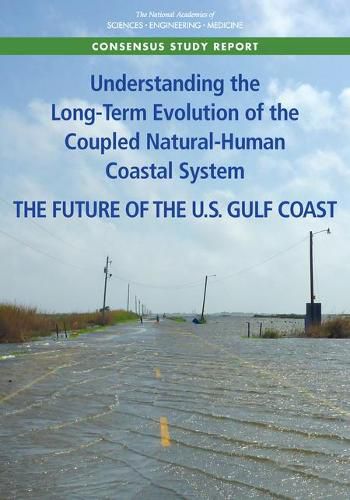Understanding the Long-Term Evolution of the Coupled Natural-Human Coastal System: The Future of the U.S. Gulf Coast
National Academies of Sciences, Engineering, and Medicine,Division of Behavioral and Social Sciences and Education,Division on Earth and Life Studies,Board on Environmental Change and Society,Ocean Studies Board

Understanding the Long-Term Evolution of the Coupled Natural-Human Coastal System: The Future of the U.S. Gulf Coast
National Academies of Sciences, Engineering, and Medicine,Division of Behavioral and Social Sciences and Education,Division on Earth and Life Studies,Board on Environmental Change and Society,Ocean Studies Board
The U.S. Gulf Coast provides a valuable setting to study deeply connected natural and human interactions and feedbacks that have led to a complex, interconnected coastal system. The physical landscape in the region has changed significantly due to broad-scale, long-term processes such as coastal subsidence and river sediment deposition as well as short-term episodic events such as hurricanes. Modifications from human activities, including building levees and canals and constructing buildings and roads, have left their own imprint on the natural landscape. This coupled natural-human coastal system and the individual aspects within it (physical, ecological, and human) are under increased pressure from accelerating environmental stressors such as sea level rise, intensifying hurricanes, and continued population increase with its accompanying coastal development. Promoting the resilience and maintaining the habitability of the Gulf Coast into the future will need improved understanding of the coupled natural-human coastal system, as well as effective sharing of this understanding in support of decision-making and policies.
Understanding the Long-term Evolution of the Coupled Natural-Human Coastal System presents a research agenda meant to enable a better understanding of the multiple and interconnected factors that influence long-term processes along the Gulf Coast. This report identifies scientific and technical gaps in understanding the interactions and feedbacks between human and natural processes, defines essential components of a research and development program in response to the identified gaps, and develops priorities for critical areas of research.
This item is not currently in-stock. It can be ordered online and is expected to ship in approx 4 weeks
Our stock data is updated periodically, and availability may change throughout the day for in-demand items. Please call the relevant shop for the most current stock information. Prices are subject to change without notice.
Sign in or become a Readings Member to add this title to a wishlist.


